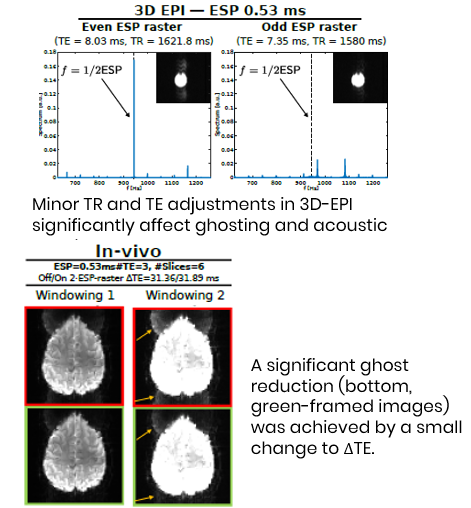Fast MRI sequences such as echo-planar imaging (EPI) generate strong mechanical vibrations in the scanner, producing loud sounds, image ghosting, and possible hardware strain, issues that are amplified at ultra-high magnetic fields. This technology introduces a model-based method for predicting and controlling the acoustic spectrum in MRI by subtly adjusting timing parameters (echo and slice timing). These adjustments lower sound levels, mitigate ghosting artifacts, and enhance image quality.
- Low-noise MRI protocols for sensitive patient populations (e.g., infants, anxiety-sensitive subjects).
- Improved safety by minimizing mechanical vibrations that can lead to gradient or coil failure.
- Enhanced image quality through significant reduction of ghosting artifacts.
- Optimization of high-field MRI protocols (7 T and above) without hardware modification.
- Predicts acoustic modes and peaks directly from gradient waveforms
- Reduces noise and ghosting via minor timing adjustments instead of hardware changes
- Replaces restrictive “forbidden-frequency” rules with model-based vibration prediction

A validated model of the acoustic spectrum was developed and experimentally confirmed on a 7 T Siemens MAGNETOM Terra system using both phantom and in-vivo imaging. The approach was shown to reduce acoustic peaks and image ghosting by tuning timing parameters in multi-echo and multi-slice EPI. Ongoing work aims to incorporate system-specific mechanical resonances to further refine the predictive power and facilitate integration into commercial MRI pulse-sequence software.


